The importance of shoulder development can never be over emphasized. The shoulders give the body that illustrious X-frame look, and broad clavicles are the genetic signature of mother earth telling us, this is a big man.
This has been evident through the ages as the big man has always been the man to turn to in times of strife; he is the leader of the clans and tribes throughout the world. We have all heard the old sayings, "That's a big burden to carry," or "He's got the weight of the world on his shoulders".
People have put so much faith in shoulder development that several decades ago, 1920 to be precise, a U.S. Presidential candidate, Warren Harding, was nominated merely because of his rather large frame. None of his policies were in question, nor was his ability to lead the world's most powerful nation.
After all, he was a big man and had shoulders that looked as if they could bear the weight of the world with ease. Not only did his physical stature earn him the nomination to run for president, his rather large X frame and broad shoulders actually won him a seat in the oval office thus illustrating just how important we, as humans, deem the development of the shoulders.
But we as bodybuilders are not interested in the figurative necessity for big strong shoulders; we want actual delts that are as big as boulders, and as round as a cannon ball.
Naturally, having broad clavicles is one thing, but what about us guys with the small frame? Can we build boulder shoulders? Can we earn that X-frame physique by slogging it out in the gym week after week, month after month? The answer is of course we can, but it's got to be done right.
All too often we have seen guys in the gym banging out a chest workout, and throwing in a few side laterals at the end of the workout, and on back days a few sets for rear delts. And yes, these guys have shoulder development, but come on, who wants shoulders like a wine bottle?
Every time these guys throw their gym bag on their shoulder, the bag falls off. Or when they compete, the backstage assistant keeps falling forward as they try and oil up their backs. We want delts that can at least fill out your jacket, so that you don't need to go all Miami Vice and install a set of shoulder pads.
That being said, well developed shoulders can really set off a physique. Shoulders can really draw attention to the arms and the chest, and when developed symmetrically, the tie in between the muscle groups gives the physique that artistic quality that even Michelangelo would be proud of.
This delt-destroying, boulder-shoulder workout will challenge even the most advanced trainers, yielding unparalleled pumps, and will demand a real blood-and-guts attitude to your training. So if you do not want to put it all on the line and achieve deltoid development that is second to none, read no farther. If however, you have balls as tough as a jockey's then read on.
A common misconception with hardcore training or HIT is that minimal sets are required and it's simply a case of going straight into an all-out heavy-as-a-hip-hop-star's neck chain, set to failure.
In this workout we will concentrate on pre exhausting the delts before maxing out with the heavy sets. It's volume meets HIIT.
Delt Domination Exercise Routine
Exercise 1. One-arm side laterals
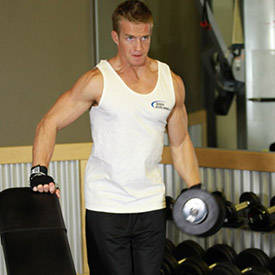
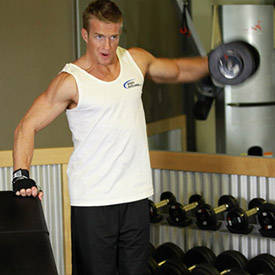
The first exercise is for the rear delts, starting with single-arm laterals. Raise the arm in one smooth motion until parallel with the floor, but ensure to rotate the arm as you move so that your arm is in the 'crucifix' position. Hold for a count of two so that you gain maximum contraction of the rear delt.
Exercise 2. Seated Bent-Over Rear Delt Raise
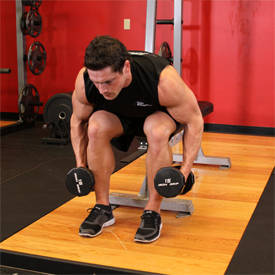
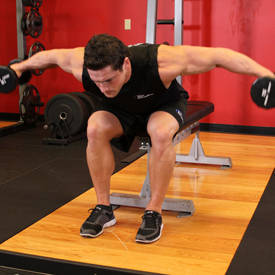
Staying with rear delts we will move onto bent-over dumbbell lateral raises. From the start position, raise the dumbbells until rear delts are fully contracted, hold for a count of 2 before lowering slowly. The movement should be performed under complete control in order for the rear delts to yield maximum benefit.
Exercise 3. Side Lateral Raises
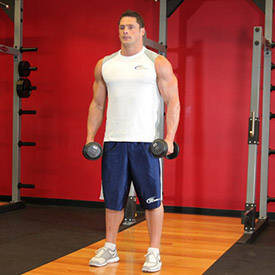
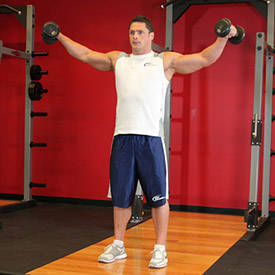
Now that the rear delts are hit first, it is time to concentrate on the lateral head of the deltoid by performing side lateral raises. The trick here is to focus on contracting the lateral head, rather than swinging up the dumbbells to get a so called rep.
Pick a weight that you can actually handle without cheating, so that when you are at the top phase of the movement, your arms are parallel to the floor. Increase the weight with each set, while also lowering the rep range.
Exercise 4. Dumbbell Shoulder Press
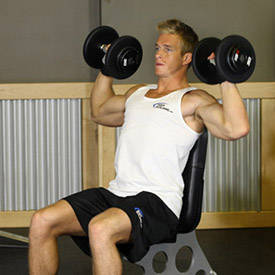
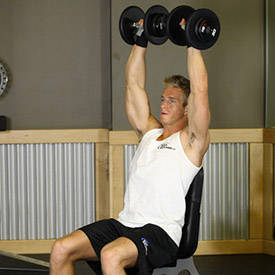
The delts should be very much pre-exhausted by now and are ready to take the workout to the next level, dumbbell shoulder press. I tend to begin with the arnold dumbbell press, and as the weight increases change movement to traditional pressing, that is, palms forward through the whole movement.
Exercise 5. Standing Barbell Press Behind Neck
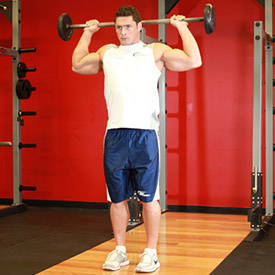
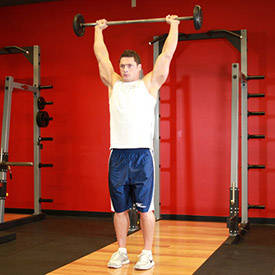
This next pressing movement is the behind the neck shoulder press. I tend to use the Smith machine here and press behind the neck. Now I know what some of you Kinesiology students are saying to yourselves here, "Press-behind-the-neck is soooooo bad for you, the shoulders are in flexion and externally rotated, and are at great risk of injury."
This is a valid point, but the argument could also be used for bent over barbell rows, seated cable rows, squats, deadlifts, I could literally go on and on here. The point I'm trying to make is that training, regardless of the exercise you are doing, poses a risk of injury. And most exercises, if not performed correctly will, in fact, cause injury over time. Press-behind-the-neck is one such exercise.
My advice is to fix the bench into place so that there is no need for any movement other than pressing the bar. What should happen is the bar should slightly graze the back of the skull as you lower the bar, however, it need only be lowered to ear level as this will limit the unnecessary joint action and minimize the chance of a rotator cuff injury.
After all, we are trying to build some serious boulder shoulders here, and how can we do that if we get injured. However since this is the last set of the pressing movement, it has to be stepped up a notch! After the first set of 10-to-12 repetitions is complete, load the bar to the maximum weight you can handle for 4-to-6 reps but use smaller plates (25 or 35 pounds) depending on your level.
Make sure to get as many good form reps as possible with the weight before stripping (this is what's otherwise termed as "drop sets"). This process is repeated until there is only one plate remaining on the bar, going to failure.
Recruit a training partner to assist with the concentric phase of the movement so that you are taking maximum stress during the eccentric (negative) phase, annihilating the delts.

BodyFit
$6.99/month- 2,500+ expert-created single workouts
- 3,500+ how-to exercise videos
- Detailed workout instruction
- Step-by-step workout tips
- Training at gym or at home
- Access to Workout Plans
- Access to Bodyfit App
- Store Discounts
Already have a Bodybuilding.com account with BodyFit? Sign In

What comes with BodyFit?

- Instructional Videos
Don't risk doing a workout improperly! Avoid injury and keep your form in check with in-depth instructional videos.

- How-to Images
View our enormous library of workout photos and see exactly how each exercise should be done before you give it a shot.

- Step-by-Step Instructions
Quickly read through our step-by-step directions to ensure you're doing each workout correctly the first time, every time.
Conclusion
All that remains is that you get in your protein shake, Vitargo, your creatine and glutamine and of course your post-workout meal, and before long, you will possess some serious boulder shoulders!




